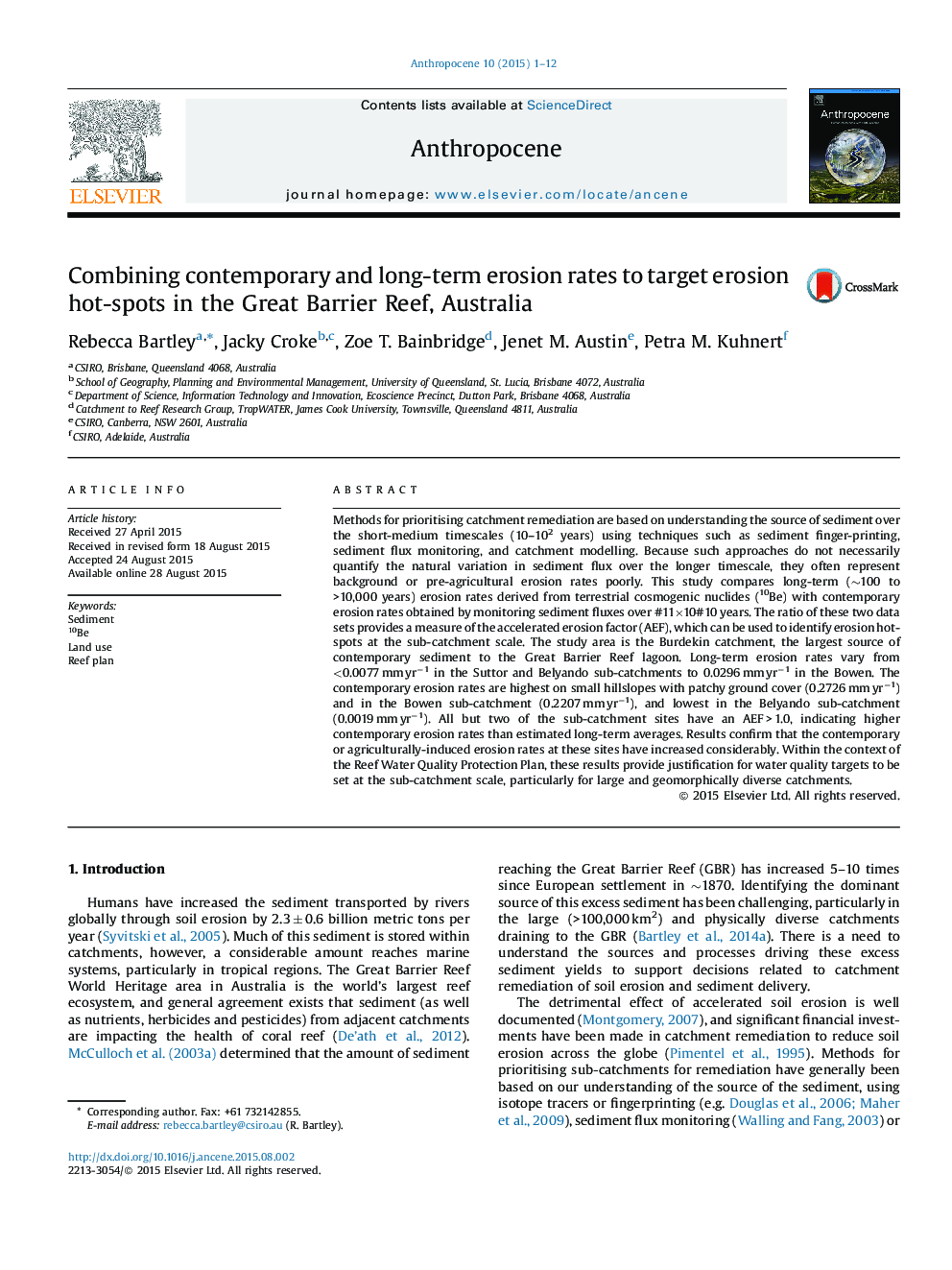| کد مقاله | کد نشریه | سال انتشار | مقاله انگلیسی | نسخه تمام متن |
|---|---|---|---|---|
| 4461857 | 1621515 | 2015 | 12 صفحه PDF | دانلود رایگان |
• This paper presents the first non-modelled estimates of contemporary measured erosion rates against background long term erosion rates in the Great Barrier Reef (GBR) catchments.
• Using an accelerated erosion factor (AEF), this study has highlighted that there are very specific ‘hot-spot’ areas that warrant priority treatment in terms of catchment remediation (Bowen sub-catchment, Upper Burdekin sub-catchment and low cover grazing areas).
• Due to the large intra-catchment variability of erosion in space and time, this study highlights that having a single end of catchment water quality target is inappropriate. Sub-catchment monitoring and evaluation is more suitable.
• The erosion rates presented in this paper represent a more robust way to ‘bench-mark’ current erosion rates compared with the current water quality ‘targets’.
Methods for prioritising catchment remediation are based on understanding the source of sediment over the short-medium timescales (10–102 years) using techniques such as sediment finger-printing, sediment flux monitoring, and catchment modelling. Because such approaches do not necessarily quantify the natural variation in sediment flux over the longer timescale, they often represent background or pre-agricultural erosion rates poorly. This study compares long-term (∼100 to >10,000 years) erosion rates derived from terrestrial cosmogenic nuclides (10Be) with contemporary erosion rates obtained by monitoring sediment fluxes over #11×10#10 years. The ratio of these two data sets provides a measure of the accelerated erosion factor (AEF), which can be used to identify erosion hot-spots at the sub-catchment scale. The study area is the Burdekin catchment, the largest source of contemporary sediment to the Great Barrier Reef lagoon. Long-term erosion rates vary from <0.0077 mm yr−1 in the Suttor and Belyando sub-catchments to 0.0296 mm yr−1 in the Bowen. The contemporary erosion rates are highest on small hillslopes with patchy ground cover (0.2726 mm yr−1) and in the Bowen sub-catchment (0.2207 mm yr−1), and lowest in the Belyando sub-catchment (0.0019 mm yr−1). All but two of the sub-catchment sites have an AEF > 1.0, indicating higher contemporary erosion rates than estimated long-term averages. Results confirm that the contemporary or agriculturally-induced erosion rates at these sites have increased considerably. Within the context of the Reef Water Quality Protection Plan, these results provide justification for water quality targets to be set at the sub-catchment scale, particularly for large and geomorphically diverse catchments.
Journal: Anthropocene - Volume 10, June 2015, Pages 1–12
